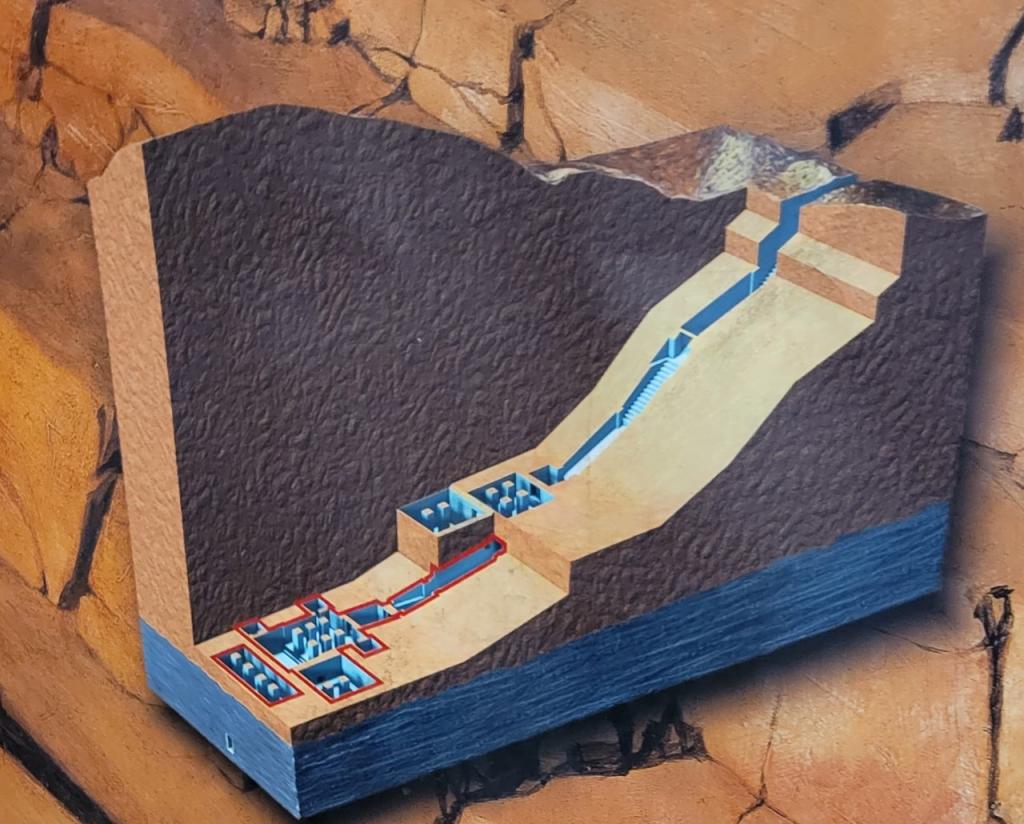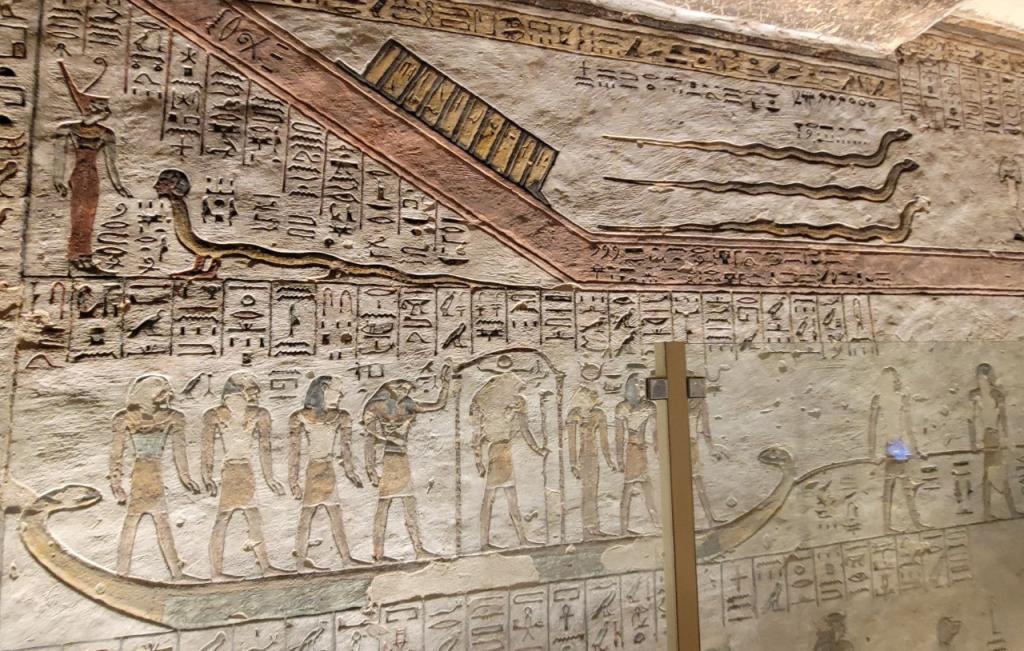Going to Egypt can be overwhelming in many ways. Your initial reaction to something like the tombs of the Pharaohs in the Valley of the Kings (and Queens) at Luxor may well be one of astonishment…. like Joshua’s here who went on our Genesis to Revelation tour last summer…
I know how he feels. Visiting the tombs of the Pharaohs is mind boggling. You see images carved and painted 3,000 years and more ago, and some of them look like they were done yesterday. So let’s walk through the door of discovery and see what we can find. But first a few words about Egyptian theology. Of all the pagan religions in Biblical times, the one that seems to have the most robust theology of the afterlife is Egyptian religion. And much of their theology is shaped by the land and its nature itself. What I mean by this is the sun rises in the east of the Nile, and so the east side of the Nile is associated with birth and life, whereas the sun sets on the west side of the Nile and so the tombs of the Pharaohs are on the west side of the Nile. And in between, the mighty Nile is the vehicle over which one must sail your boat into eternity. See for instance this picture…
We will say much more about their theology of the afterlife in due course, but for now, let’s walk through the door of discover and contemplate the Valley of the Queens, in particular Queen Hatshepsut.
Whereas in the Valley of the Kings, what’s inside the tombs is most impressive, in the Valley of the Queens, it is the superstructure around the tomb that is impressive, and full disclosure this tomb has undergone a lot of restoration in order to look like it did in antiquity. Queen Hatshepsut was before Cleopatra the most famous female Pharaoh (she reigned from about 1473 to 1458 B.C., so before the Pharaoh of the Exodus).
The aerial shot is impressive….
Basically what happened is when a Pharaoh was coronated, they began to dig his or her tomb. The longer the reign, the deeper and more decorated the tomb.
To illustrate this point,while Hatshepsut reigned for a short time, and so there is not a long and elaborate tomb, Merneptah who reigned a long time in the 13 century B.C. and some think was the Pharaoh of the Exodus (not me though) has a very deep tomb which we visited on this trip. Here is a schematic showing how deep his tomb was.
And here is a perspective of what it took to climb back out of such a tomb.
it is an adventure. Unfortunately for Hatshepsut, she had to endure erasures, with her image being erased from the images on statues, and in the tomb, yet another sad testimony to male insecurity. This practice has a term in Latin— damnatio memoriae— the destruction of the memory of a great person in this case, though it came to mean ‘don’t forget to die’!!



















